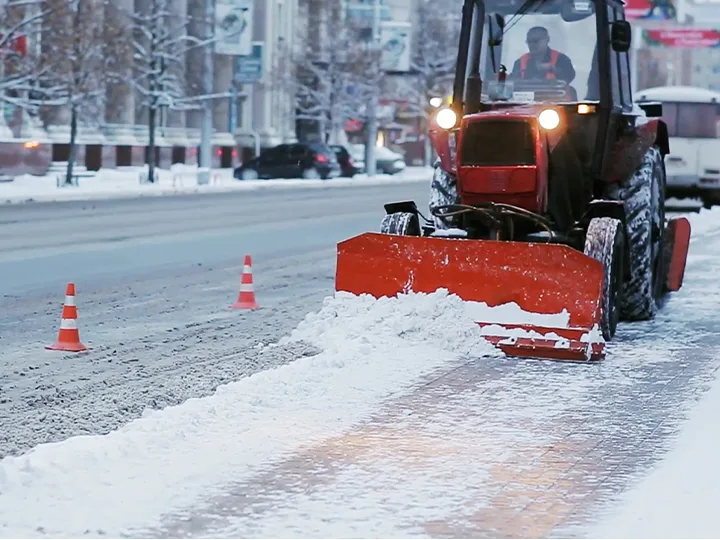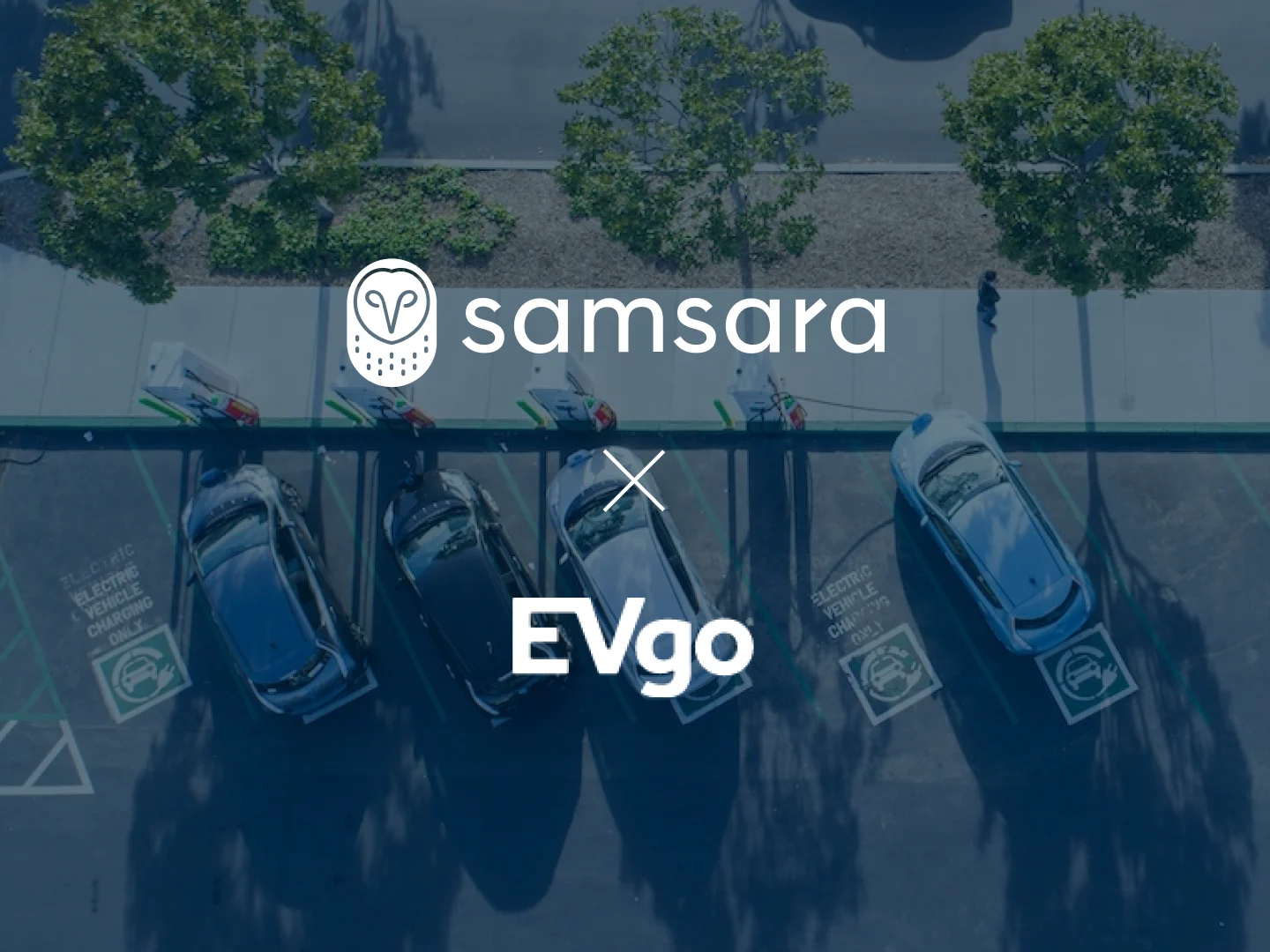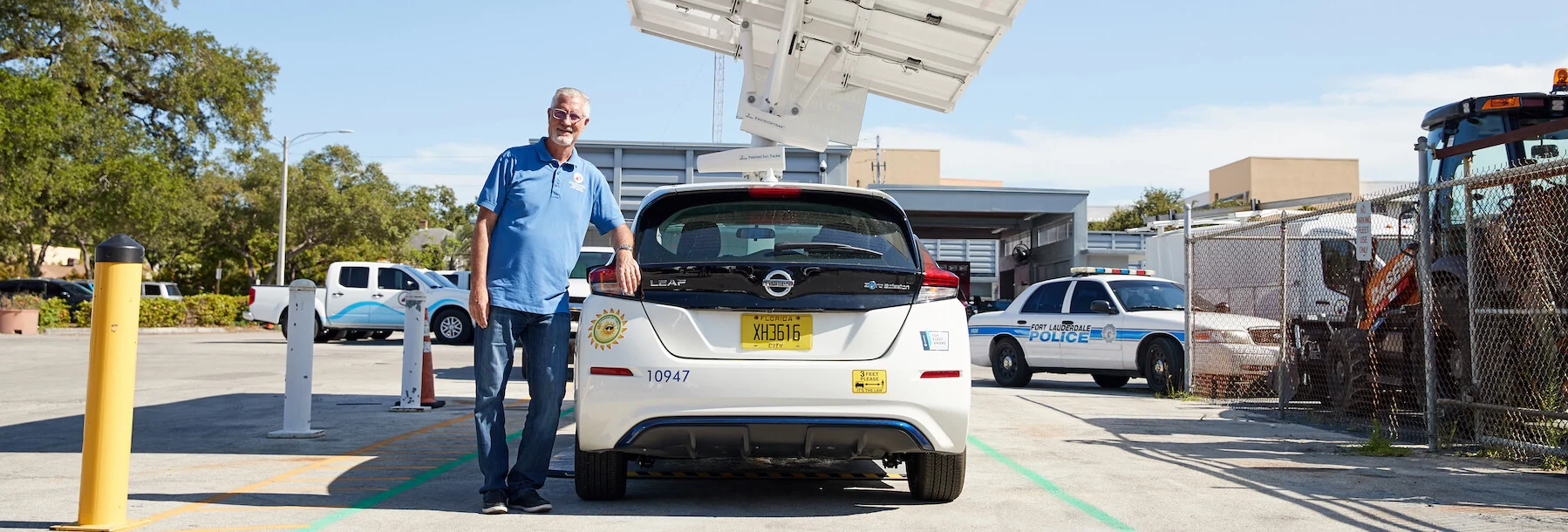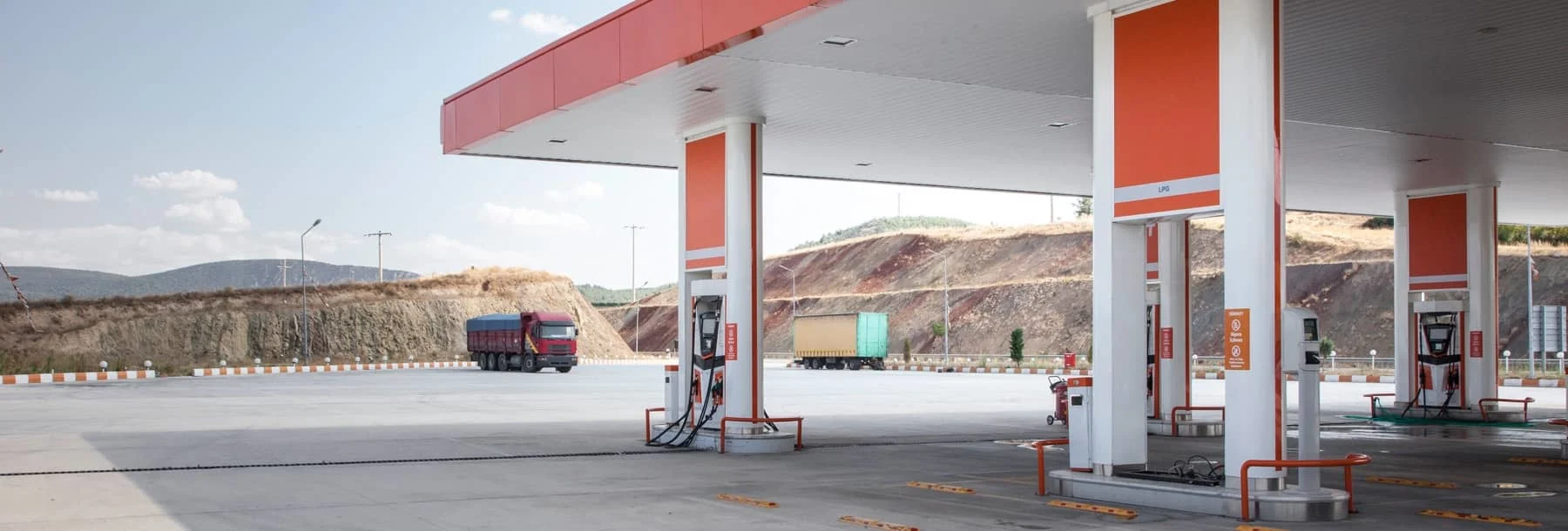Sustainability
The SMART Grants Program: What states and local governments need to know
October 10, 2022

Get the latest from Samsara
Subscribe nowCities and small towns alike have been investing in "smart" technology and programs for more than a decade. These projects run the gamut, from smart electric grids that can detect outages before customers call, to smart vehicle tracking that can optimize service routes for municipal trucks like snow plows, to countless more examples from communities around the world.
Today, as networks and devices have become more sophisticated, investment in smart programs is set to take off. According to a recent report from Juniper Research, global annual spending on "smart city" initiatives will reach $70 billion by 2026, up from $35 billion in 2021, and it's easy to see why. Smart programs can deliver a range of benefits for public transit agencies, public toll authorities, municipalities, and other types of public sector organizations.
For communities, these improvements can include everything from reduced emissions and lower fuel costs, to safer streets and happier citizens, among many others. In just one example from the same Juniper Research report, smart city projects are forecasted to achieve energy savings of up to $96 billion in 2026.
Smart projects offer tangible gains and almost limitless possibilities for innovation. However, even with well-defined plans and clear-cut benefits, they often run into funding challenges. That's one reason why, earlier this year, the U.S. Department of Transportation (USDOT) launched a new initiative, the Strengthening Mobility and Revolutionizing Transportation (SMART) Grants Program. The new federal grant program makes $100 million in funding available to municipalities across the United States to plan and implement smart technology projects.
The deadline for Stage 1 SMART Grant applications for FY 2022 funding is November 18, 2022. Ahead of the deadline, we break down what city transportation officials need to know about the SMART Grants program, including what types of technologies are eligible for funding, which organization types can receive grants, how to apply, and how you can partner with Samsara to support your smart technology initiatives.
Why is the USDOT funding the SMART Grants program?
In recent years, the U.S. federal government has focused on strengthening the country's infrastructure, and it has made technology a core pillar of its policy. In November 2021, lawmakers passed the Bipartisan Infrastructure Law (BIL), a bill that provides $1.2 trillion for infrastructure investments across a wide range of projects. As part of the bill, lawmakers included $100 million per fiscal year—set aside through FY26—for public sector agencies to invest in advanced smart city or community technologies and systems.
The main policy goal of the SMART Grants program is to improve transportation efficiency and safety. At the same time, the funding is intended to spark innovation and help local governments build their data and technology capacity and experience. With this program, the Department of Transportation is explicitly encouraging creativity, collaboration, and big-picture thinking to tackle transportation challenges.
What types of technology programs are eligible for SMART Grants?
Every community is unique, a fact that is reflected in the eligibility guidelines for the SMART Grants program. Instead of specifying select devices or deployment strategies, the USDOT lists eight broad technology categories that are eligible for funding:
Connected vehicles: Vehicles that send and receive information regarding vehicle movements in the network and use vehicle-to-vehicle and vehicle-to-everything communications to provide advanced and reliable connectivity.
Commerce delivery and logistics: Innovative data and technological solutions supporting efficient goods movement, such as connected vehicle probe data or telematics information, road weather data, or global positioning data to improve on-time pickup and delivery, improved travel time reliability, reduced fuel consumption and emissions, and reduced labor and vehicle maintenance costs.
Smart grid: A programmable and efficient energy transmission and distribution system to support the adoption or expansion of energy capture, electric vehicle deployment, or freight or commercial fleet fuel efficiency.
Intelligent, sensor-based infrastructure: Deployment and use of a collective intelligent infrastructure that allows sensors to collect and report real-time data to inform everyday transportation-related operations and performance.
Coordinated automation: The use of automated transportation and autonomous vehicles while working to minimize the impact on the accessibility of any other user group or mode of travel.
Systems integration: Integration of intelligent transportation systems with other existing systems and other advanced transportation technologies.
Leveraging use of innovative aviation technology: Using innovative aviation technologies, such as unmanned aircraft systems, to support transportation safety and efficiencies, including traffic monitoring and infrastructure inspection.
Smart technology traffic signals: Improving the active management and functioning of traffic signals.
What types of SMART Grants are available?
There are two types of SMART Grants that public sector organizations can apply for: Stage 1: Planning and Prototyping Grants; and Stage 2: Implementation Grants.
The USDOT has directed that only recipients of Stage 1 awards will be eligible for Stage 2 grants. This means that organizations can't apply directly to Stage 2 even if they have already completed a planning process. Read on for more about what activities can be funded by each type of grant.
Stage 1: Planning and Prototyping Grants
In Stage 1, public sector leaders can use funds to lay the groundwork for a successful project. In practice, this means grants can be used for initiatives that include:
Planning
Feasibility analyses
Revenue forecasting
Environmental review
Permitting
Preliminary engineering and design work
Systems development or information technology work
Acquiring real property, including land and improvements to land relating to an eligible project
During Stage 1, the USDOT recommends that public sector leaders build internal buy-in and partnerships with public, private, academic, nonprofit, and community organizations to prototype and refine their concepts, as well as report on their results.
At the end of Stage 1, grantees should have enough information to either create a full implementation plan with robust performance metrics, or make the decision to not pursue the project. In FY22, the USDOT anticipates awarding 30 to 50 Stage 1 grants, with each grantee receiving up to approximately $2 million over 18 months.
Stage 2: Implementation Grants
Stage 2 SMART Grants are intended to enable public sector organizations to implement and scale their demonstration projects, integrating them into their existing transportation systems and refining the concept so that it can be repeated by other municipalities who may have similar needs. Stage 2 grants can be used for activities that include:
Construction
Reconstruction
Rehabilitation
Replacement
Environmental mitigation
Addressing construction contingencies
Acquiring vehicles and other equipment
The USDOT anticipates that Stage 2 will award grantees up to approximately $15 million over 36 months beginning in FY23.
SMART Grant funding restrictions
There are a few limited areas that SMART Grant funds may not be used for. These are:
Reimbursement for any pre-award costs or application preparation costs
Traffic or parking enforcement activities
Purchasing or leasing license plate readers
What are the requirements for receiving a SMART Grant award?
To be eligible to apply for a SMART Grant, you must be a:
State
political subdivision of a State
Tribal government
public transit agency or authority
public toll authority
metropolitan planning organization
Potential applicants may find that they face similar challenges and are working on similar projects that use related technologies to address them, and potentially share common resources, including partnerships with community groups and other non-profits, academic institutions, or the private sector. In these cases, eligible entities may choose to collaborate across regions and submit a joint application.
To help ensure geographic diversity across eligible entities, the SMART Grants program also earmarks a certain percentage of funds for communities of different sizes. Over the lifetime of the program:
Not more than 40% of funds shall be used to primarily benefit large communities, jurisdictions with a population greater than 400,000;
Not more than 30% shall be used to primarily benefit mid-sized communities, non-rural jurisdictions with a population under 400,000;
And not more than 30% shall be used to primarily benefit rural communities or regional partnerships.
How do public sector organizations apply for a SMART Grant?
To apply for a SMART Grant, you must use the USDOT's online submission portal, Valid Eval, as well as register with the Federal System of Award Management (SAM). You can find all grant application materials on grants.gov, and you can learn more about how to apply by referring to the Notice of Funding Opportunity (NOFO).
Applications for FY22 Stage 1 grants must be submitted by November 18, 2022. Additional opportunities to apply for both Stage 1 and Stage 2 grants will be made available in FY23. The federal government will post additional NOFOs in FY23 to announce deadlines for both Stage 1 and Stage 2 grants.
When applying, you must include these standard forms:
Application for Federal Assistance (SF-424)
Budget Information for Non-Construction Programs (SF424A)
Assurances for Non-Construction Programs (SF-424B)
And, if applicable:
Assurances for Construction Programs (SF-424D)
Budget Information for Construction Programs (SF-424C)
Disclosure of Lobbying Activities (SF-LLL)
All of the required forms are available on the Valid Eval SMART Grants page.
Applications must also include:
Responses to DOT key information questions: The USDOT has created a form to collect basic information about the project, including the project name, information on the lead applicant, a brief project description, the project location, including the community size and census tract information, the total dollar amount requested, project schedule, and type of technology involved in the project.
A project narrative: Eligible entities must submit a project narrative that outlines the applicant’s case for meeting the SMART Grant merit criteria. The narrative must be submitted as an attachment in PDF format, with a suggested length of eight pages.
Resumes: Applicants should submit shortened resumes of key individuals staffing the project. This section should be no more than three pages total.
Letters of commitment: Applicants should provide letters of commitment from critical partners involved in the project.
What are the selection criteria for the SMART Grants program?
The USDOT has outlined detailed selection criteria in three key areas: technical merit, project readiness, and other considerations. Within each area, the USDOT provides more specific guidelines to help eligible applicants draft their proposals. Here is a brief rundown of what must be included.
Technical merit criteria include:
Identification and Understanding of the Problem to Be Solved
Appropriateness of Proposed Solution
Expected Benefits
Project readiness criteria include:
Feasibility of Work Plan
Community Engagement and Partnerships
Leadership and Qualifications
Additional Consideration: Benefit to Historically Disadvantaged Communities
The USDOT is committed to awarding SMART Grants to eligible projects that will benefit historically disadvantaged communities. Applicants must outline how their project will benefit these communities, especially benefits that pertain to environmental justice. The USDOT website has a number of helpful resources, including webinar recordings and FAQs, that provide additional information on how to create a successful proposal that includes these and all of the other criteria.
Partner with Samsara to Support Your SMART Grant Planning and Implementation
Developing partnerships, including those with technology vendors, is a key component of the Strengthening Mobility and Revolutionizing TransportationGrants Program. The USDOT recognizes that working with solutions providers can ease the planning process and make implementation faster.
To this end, Samsara offers a wide range of solutions across our Connected Operations Cloud that can help you plan and implement your smart city and transportation projects. SMART Grant funds can be used for Samsara solutions in these program areas:
Connected vehicles: SMART Grant funds can be used to equip or retrofit publicly owned or leased vehicles with connected vehicle technology. These projects can include equipping your city fleet with Samsara Vehicle Gateways, which provide real-time telematics information, including GPS tracking, diagnostics, and more; Samsara AI Dash Cams, which enable proactive video-based safety management; and Samsara Camera Connector, which connects third-party cameras to the Samsara dashboard for side, rear, and interior visibility.
Commerce delivery and logistics: SMART Grants can also be used to fund technology that enables more efficient city transportation logistics, from improving on-time service to reducing maintenance or labor costs. For these initiatives, you can deploy Samsara for preventative maintenance, real-time vehicle tracking, and equipment monitoring, as well as creating driver workflows to optimize dispatch and routing, among a variety of other uses.
Smart grid technology: SMART Grants can also be used to fund electric vehicle deployment and fleet fuel efficiency programs. These can include partnering with Samsara to launch and support a city fleet electrification program or fuel efficiency program, among other projects.
Samsara has demonstrated success working with state and local governments—including cities and public transit agencies—to implement innovative smart programs and achieve tangible results that can be quickly and efficiently scaled. Here are just a few of the benefits our customers have received:
Electric fleet and fuel monitoring solutions from Samsara helped the City of Sacramento to meet ambitious zero-emission targets mandated by the city's fleet sustainability plan, while the City of Boston has been able to manage their EV fleet's state of charge in real time to prevent "bricked" vehicles.
A consolidated cloud-based dashboard allowed the County of Santa Barbara to review video from across sites more efficiently and save three to four hours per audit incident spent investigating instances of theft, fraud, and illegal dumping.
Vehicle telematics and platform consolidation helped Athens-Clarke County take a data-driven approach to measuring vehicle diagnostic data and digitize documents to streamline file management, leading to a 58% increase in fuel efficiency and a 45% reduction in fleet management technology costs.
If you’re considering submitting an application for the SMART Grants program, you can learn more about how Samsara has helped state and local governments implement smart technology programs.
Get the latest from Samsara
Subscribe now


















